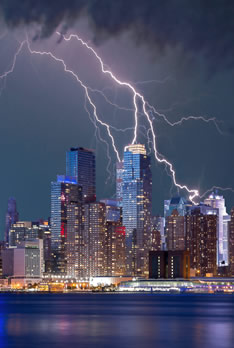They waited in one large room for hours to see us for 30 minutes. A few waited uncomfortably among people they never expected to encounter and in a setting they never knew existed before they lost their job or insurance. With caseloads of 100 or more, we saw each person once every three months, unless there was a crisis. If there was, we got them in to see the doctor. But with such limited time and treatment options, there was no guarantee it would help.
Scenarios like these are common in community mental health.
Scenario 1: John’s mother called; she was scared of him. He broke a window and threw a knife at her. He thought airplanes were shooting bombs out of the air-conditioning vents in their house. He was off his medication. It was a crisis, so we scheduled an emergency appointment. His brother brought him to the clinic by car. John ran into the bathroom, ran out and smeared feces on the hall wall. He cursed and flailed.
People waiting in the lobby were watching, wary. We knew we had to physically restrain him, and get the doc to give him an injection that would calm him. We cleared the lobby, moving everyone outside, until we could isolate him. No hospital bed would be available for at least a week. So John would be returning home.
Scenario 2: A colleague was doing paperwork with a patient in my office, multitasking to keep up the pace, when the woman started crying. She put the papers aside to talk to her, to look at her, to listen. But that took extra time. The doctor, who had just finished with his last patient and was expecting another, came looking for his next patient. He opened the door to the clinician’s office. The patient immediately pulled herself together and they went back to the paperwork, wrapping up quickly to make up for lost time in the schedule. They never got back to why she was crying.
Scenario 3: Some clinicians brought packages of crackers to give away because people sat in the waiting room so long, they got hungry and irritable. A colleague gave crackers to an elderly woman who wouldn’t eat them until she was assured it was not charity, but something we provided because people have to wait so long.
Scenario 4: Though caseworkers were never trained to do group therapy, we had to run groups because more people could be seen in less time and it cost less for unlicensed professionals to do the work. Everyone who was waiting for a particular doctor comprised the group. In one group of two people, neither would talk. One of them walked out. Immediately, the other convulsed in tears, clasped her arms tightly around her chest and rocked toward me, telling me, in choked bits and pieces that her son had been murdered on the street in front of her, while she begged for his life.
Scenario 5: I checked my mail cubby, usually filled with routine confirmations and notices from the central office. An appointment reminder sent to a young man who hadn’t shown up was returned to me marked DECEASED. He had a tendency toward reading dark books and at our last meeting shared with me his angst about the meaning of life. He committed suicide, and we didn’t know it.
 After a decade of working in systems that allow so little caregiving, I could no longer do it. I stopped liking my patients and dreaded having to see them, so I knew I had to go. Nursing homes, hospitals, mental health clinics, schools, these were the places to which I was naturally drawn. It was work I loved and found worthwhile, a way to contribute to the greater good that gave me a sense of purpose. But looking in the mirror, I saw the beginnings of an apathetic, hostile social service worker. The kind of colleague I occasionally encountered, and disdained. I was earning very little money, there were so few places to turn to for the services my clients needed and none for my own well-being. The situation created quandaries that tied me in knots.
After a decade of working in systems that allow so little caregiving, I could no longer do it. I stopped liking my patients and dreaded having to see them, so I knew I had to go. Nursing homes, hospitals, mental health clinics, schools, these were the places to which I was naturally drawn. It was work I loved and found worthwhile, a way to contribute to the greater good that gave me a sense of purpose. But looking in the mirror, I saw the beginnings of an apathetic, hostile social service worker. The kind of colleague I occasionally encountered, and disdained. I was earning very little money, there were so few places to turn to for the services my clients needed and none for my own well-being. The situation created quandaries that tied me in knots.
So, for my financial and mental health, I quit the job, enrolled in graduate school and learned to work with computers and statistics. In the two plus decades since, this career route has been financially rewarding, intellectually challenging, and respected. It distanced me from the social systems that ground down my compassion, gave me a reprieve from responsibility for helping people with their problems and allowed me time to heal from what I eventually realized was burnout.
Now in my fifties, I’m still scorched, but the personal and social costs of such destructive systems and the needs of so many Americans are too great for me to keep my distance forever. The social systems that overwhelmed me have become ever more necessary and even less nourishing, to both caretakers and people needing care. I was able to leave that system. My patients couldn’t.
The nation’s community mental health system has been floundering for years. In January 2013, the U.S. Health and Human Services (HHS) Substance Abuse and Mental Health Services Administration gave Congress a formal report on the status of the mental health and substance abuse workforce at the request of the Senate Appropriations subcommittee on Labor, Health, and Human Services, Education and Related Agencies. The report references previous reports in 2006 and 2007, which led to some changes in technology, training, resources, staff recruiting and integrating primary and behavioral healthcare.
 However, their report says, these long-term concerns about staff turnover, training needs, compensation, and shortages of qualified professionals persist and even greater demands are being placed on the system as increasing numbers of Americans need these services.
However, their report says, these long-term concerns about staff turnover, training needs, compensation, and shortages of qualified professionals persist and even greater demands are being placed on the system as increasing numbers of Americans need these services.
After a decade of wars, many returning veterans need mental health and substance abuse treatment. The Affordable Care Act is giving more people healthcare coverage and requiring that mental health issues be covered comparable to physical health, which will bring more people into the mental health system. So will screenings for mental illness and substance abuse by primary care physicians as this practice becomes more common. In addition, to alleviate mass incarceration, many States are implementing re-entry programs to reduce the prison population, many of whom need mental health or substance abuse treatment.
In the U.S., if we need physical, mental, or assisted living care, we expect that care should be available and provided with some degree of compassion. But equally widespread is the fear that it won’t be.
With the persistent and severe problems that plague most of our human services systems, there is good reason to worry that these systems will not adequately help us when we need them.
 By and large people working in these systems are humane individuals, with a desire to nourish and a willingness to confront and try to help alleviate suffering. Many believe that people who enter a human service profession do so for intrinsic rewards, the emotional satisfaction of helping a child learn, contributing to the next generation, healing wounds—physical and emotional, or comforting the dying. While the work does offer such compensation at times, more often it’s grueling and demanding. People are scared, in pain, and they lash out. Their families hover and complain, uncertain about what to do and getting little attention, and sometimes their loved ones die. Because caretakers have opened themselves to the suffering, they too must deal with their own human responses to such events. But frequently, there isn’t time. They must move on to the next crisis or person who needs them. And often, there is no way to process the experience with others, so the tension and emotional pain accumulates.
By and large people working in these systems are humane individuals, with a desire to nourish and a willingness to confront and try to help alleviate suffering. Many believe that people who enter a human service profession do so for intrinsic rewards, the emotional satisfaction of helping a child learn, contributing to the next generation, healing wounds—physical and emotional, or comforting the dying. While the work does offer such compensation at times, more often it’s grueling and demanding. People are scared, in pain, and they lash out. Their families hover and complain, uncertain about what to do and getting little attention, and sometimes their loved ones die. Because caretakers have opened themselves to the suffering, they too must deal with their own human responses to such events. But frequently, there isn’t time. They must move on to the next crisis or person who needs them. And often, there is no way to process the experience with others, so the tension and emotional pain accumulates.
Supervision and debriefing are what should have happened when I was trying to help the mother whose son was murdered. Putting people in positions to do work for which they have not been trained, that involves human lives, is irresponsible. Without expertise in trauma care, and in my shock, all I knew to do was listen and try to comfort, holding her hand and hugging her as she sobbed. She deserved better. I should have been able to call in a licensed therapist and I should have been able to debrief myself with a similarly trained supervisor. But I didn’t even know that, until long after I’d left human services work.
Sometimes though, even when trained professionals are involved, caseloads, schedules and other organizational practices preclude them from being able to use their skills to help people and take care of themselves. A colleague told me, after having to restrain a client who was physically aggressive, the supervisor immediately called in all staff involved to debrief the crisis. But the caretakers were anxious and had difficulty participating because other patients were still waiting for their appointments and paperwork had to be completed. The supervisor’s instinct was on target, but the system’s practices did not allow it. Caseloads were too high, and schedules too tight. For these reasons too, clinicians’ one-to-one time with psychiatrists are often taken up with routine administrative work rather than training and discussing cases.
In these systems, you have to work to keep your humanity.
Policies, practice, pressures and culture conspire to take it away. According to the HHS report, anywhere from 21%-67% of mental health workers experience burnout. These are extremely high rates; damaging to both caretakers and those who need care. When such a large portion of the workforce is affected, strong institutional factors are at work, producing unrelenting stress.
Caregivers suffering from burnout experience emotional exhaustion, depersonalization and reduced personal accomplishment. They may feel like a failure and doubt their competency or compassion, become pessimistic and feel trapped. They may develop a sense of detachment, isolate themselves or take their frustrations out on others. Absences from work increase, and they can become more susceptible to illness, changes in appetite and sleep, and drug or alcohol use as a coping mechanism. Even though the percentage of mental health workers who experience burnout is already high, that percentage is expected to rise as systems become increasingly stressed by reductions in budgets and increased costs that are addressed by requiring staff to produce more billable hours in an already jam-packed work day.
Patients and the system suffer when experienced professionals leave the field.
Staff turnover rates are in this range as well, from 15-42%. Leaving for a better opportunity is one reason why; burnout is another. Patients and the system suffer when experienced professionals leave the field. According to the HHS report to Congress, a majority of primary care physicians attempting to find mental health services for their patients were unable to do so due in part to a lack of mental health professionals. The regions of the nation where shortages exist cover 91 million people. Providing adequate care would require 1,846 psychiatrists and 5,931 other practitioners.
In addition, the HHS projected that 12,624 child and adolescent psychologists will be needed by 2020 but only 8,312 are expected. Employee turnover disrupts continuity of care, makes it difficult to assure consistent use of evidence-based practice, severs patient-caregiver relationships if they have been formed, and creates patient dissatisfaction.
 Inadequate financial compensation contributes to both turnover and burnout because it puts employees’ own security and health at risk. I know clinicians who cannot afford to replace their 10-year-old car, who put off trips to the dentist or doctor because of what it might cost, and worry about whether they will be able to support themselves in retirement. Some even qualify for food stamps. For example, on average, an experienced licensed social worker earns less money than a fast food restaurant manager. Direct care workers in residential treatment centers may earn minimum wage or barely above. And behavioral care professionals earn substantially less than their counterparts in physical healthcare, a phenomenon the HHS report attributes to our society’s social stigma surrounding mental illness and substance abuse that bleeds onto those who work in the field.
Inadequate financial compensation contributes to both turnover and burnout because it puts employees’ own security and health at risk. I know clinicians who cannot afford to replace their 10-year-old car, who put off trips to the dentist or doctor because of what it might cost, and worry about whether they will be able to support themselves in retirement. Some even qualify for food stamps. For example, on average, an experienced licensed social worker earns less money than a fast food restaurant manager. Direct care workers in residential treatment centers may earn minimum wage or barely above. And behavioral care professionals earn substantially less than their counterparts in physical healthcare, a phenomenon the HHS report attributes to our society’s social stigma surrounding mental illness and substance abuse that bleeds onto those who work in the field.
Market-based approaches to everything have been the reigning paradigm for the last three decades. But
if the market rewards what’s needed and is in short supply, why do we pay our caretakers so little and take so little care of them?
We cannot simultaneously destroy people’s ability to care for themselves and expect that they can care for us. In addition to needing organizational policies and practices that promote staff wellness and attract sufficient qualified professionals, we need to realistically understand and face the policies and practices in our society that create so much need for mental health and substance abuse treatment. The cost of taking care includes not only money. It requires a humanity and sense of responsibility for the common good, an ethos of looking out for and supporting one another.
In 1977, U.S. Vice President Hubert Humphrey said “the moral test of government is how that government treats those who are in the dawn of life, the children; those who are in the twilight of life, the elderly; those who are in the shadows of life; the sick, the needy and the handicapped.” In today’s climate, so steeped in public-private partnerships, the responsibility not only reflects on government, it reflects on business and us all.
Sources:
Hyde, P.S. Report to congress on the nation’s substance abuse and mental health workforce issues. U.S. Department of Health and Human Services Substance Abuse and Mental Health Services Administration, January 24, 2013.
Morse, G., Salyers, M.P., Rollins, A.L., Monroe-DeVita, M. and Pfahler, C. Burnout in mental health services: A review of the problem and its remediation. Adm Policy Ment Health, September 2012, Vol. 39, No. 5.
Thomas, M., Kohli, V. and Choi, J. Correlates of job burnout among human services workers: implications for workforce retention. Journal of Sociology & Social Welfare, December 2014, Vol. XLI, No. 4.






 After a decade of working in systems that allow so little caregiving, I could no longer do it. I stopped liking my patients and dreaded having to see them, so I knew I had to go. Nursing homes, hospitals, mental health clinics, schools, these were the places to which I was naturally drawn. It was work I loved and found worthwhile, a way to contribute to the greater good that gave me a sense of purpose. But looking in the mirror, I saw the beginnings of an apathetic, hostile social service worker. The kind of colleague I occasionally encountered, and disdained. I was earning very little money, there were so few places to turn to for the services my clients needed and none for my own well-being. The situation created quandaries that tied me in knots.
After a decade of working in systems that allow so little caregiving, I could no longer do it. I stopped liking my patients and dreaded having to see them, so I knew I had to go. Nursing homes, hospitals, mental health clinics, schools, these were the places to which I was naturally drawn. It was work I loved and found worthwhile, a way to contribute to the greater good that gave me a sense of purpose. But looking in the mirror, I saw the beginnings of an apathetic, hostile social service worker. The kind of colleague I occasionally encountered, and disdained. I was earning very little money, there were so few places to turn to for the services my clients needed and none for my own well-being. The situation created quandaries that tied me in knots. However, their report says, these long-term concerns about staff turnover, training needs, compensation, and shortages of qualified professionals persist and even greater demands are being placed on the system as increasing numbers of Americans need these services.
However, their report says, these long-term concerns about staff turnover, training needs, compensation, and shortages of qualified professionals persist and even greater demands are being placed on the system as increasing numbers of Americans need these services. Inadequate financial compensation contributes to both turnover and burnout because it puts employees’ own security and health at risk. I know clinicians who cannot afford to replace their 10-year-old car, who put off trips to the dentist or doctor because of what it might cost, and worry about whether they will be able to support themselves in retirement. Some even qualify for food stamps. For example, on average, an experienced licensed social worker earns less money than a fast food restaurant manager. Direct care workers in residential treatment centers may earn minimum wage or barely above. And behavioral care professionals earn substantially less than their counterparts in physical healthcare, a phenomenon the HHS report attributes to our society’s social stigma surrounding mental illness and substance abuse that bleeds onto those who work in the field.
Inadequate financial compensation contributes to both turnover and burnout because it puts employees’ own security and health at risk. I know clinicians who cannot afford to replace their 10-year-old car, who put off trips to the dentist or doctor because of what it might cost, and worry about whether they will be able to support themselves in retirement. Some even qualify for food stamps. For example, on average, an experienced licensed social worker earns less money than a fast food restaurant manager. Direct care workers in residential treatment centers may earn minimum wage or barely above. And behavioral care professionals earn substantially less than their counterparts in physical healthcare, a phenomenon the HHS report attributes to our society’s social stigma surrounding mental illness and substance abuse that bleeds onto those who work in the field.


 For people who feel the personal and social threats of violence but are not a part of the immediate community, like people who do not live in or around OKC, visiting the site can establish a tangible connection to the tragedy that gives concreteness and realness to an emotional connection. Some people may be sufficiently saddened or outraged after hearing about the death and feel the need to do something about it but have nowhere to go, or nothing to do, yet the feelings remain. In addition, others around them may not share or understand their intense concern.
For people who feel the personal and social threats of violence but are not a part of the immediate community, like people who do not live in or around OKC, visiting the site can establish a tangible connection to the tragedy that gives concreteness and realness to an emotional connection. Some people may be sufficiently saddened or outraged after hearing about the death and feel the need to do something about it but have nowhere to go, or nothing to do, yet the feelings remain. In addition, others around them may not share or understand their intense concern.